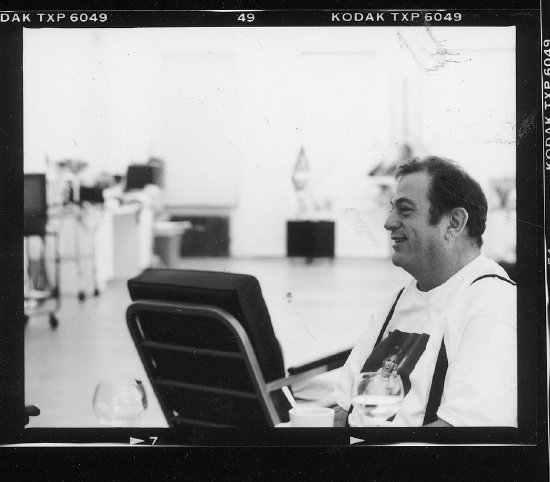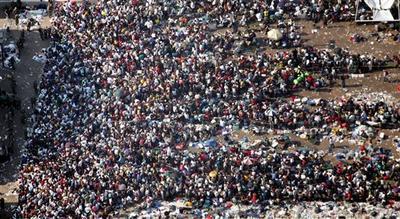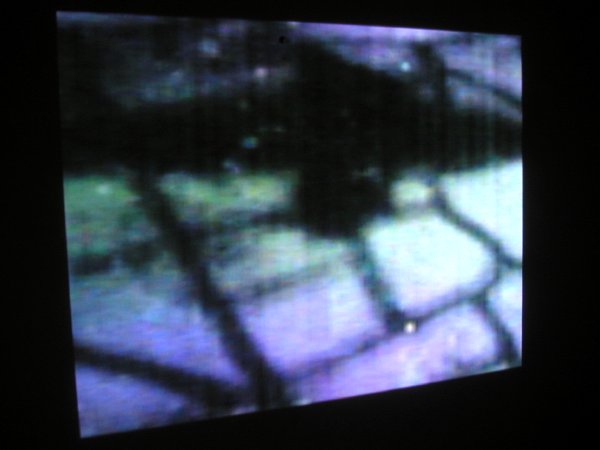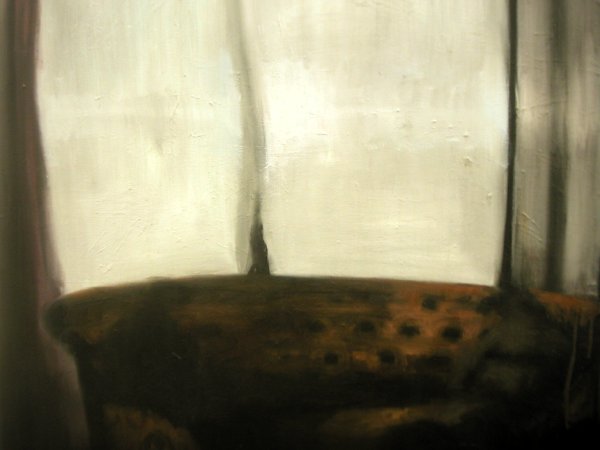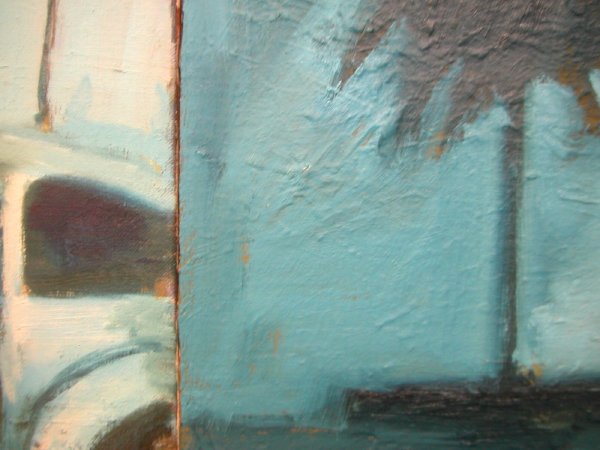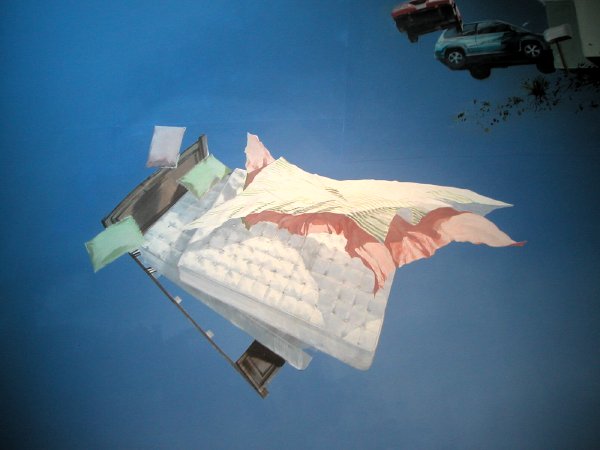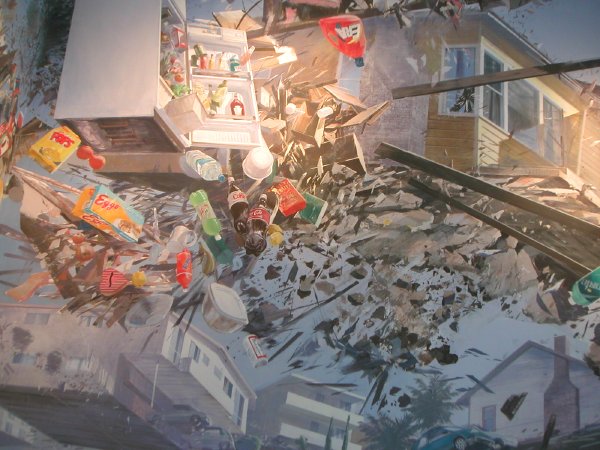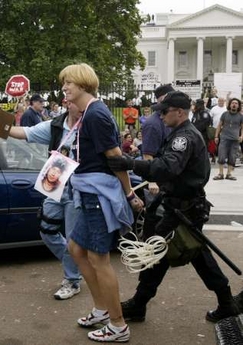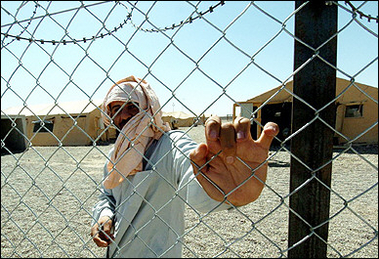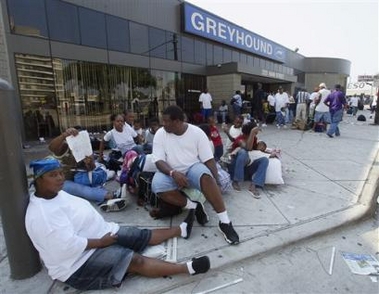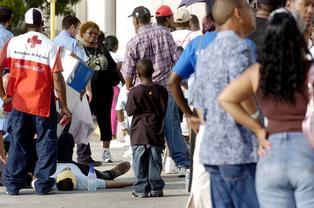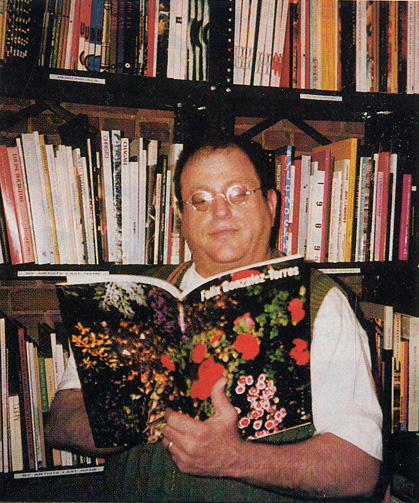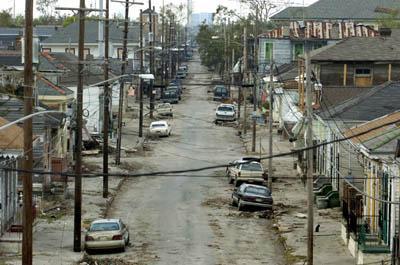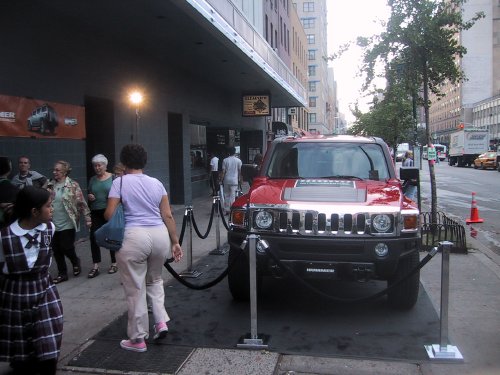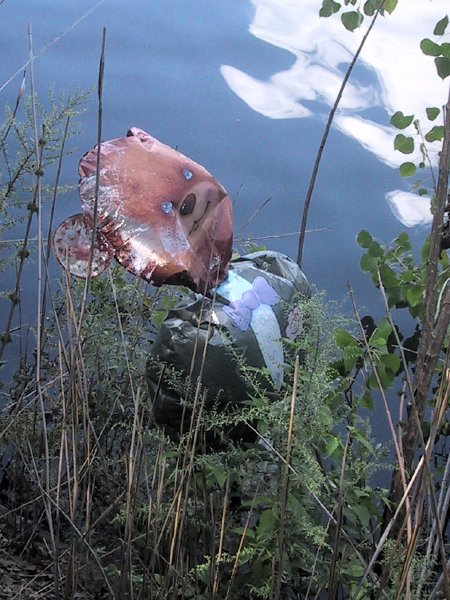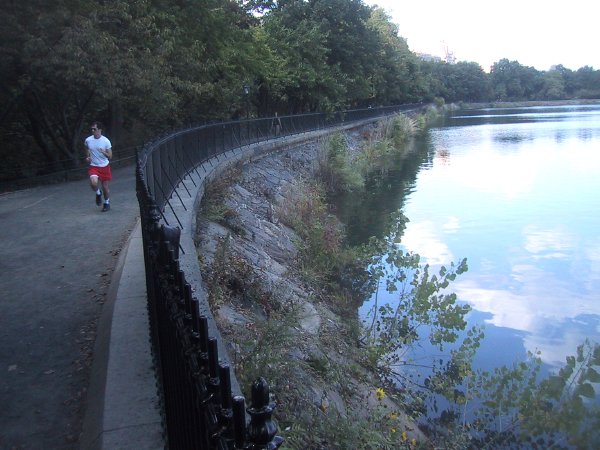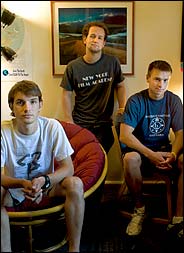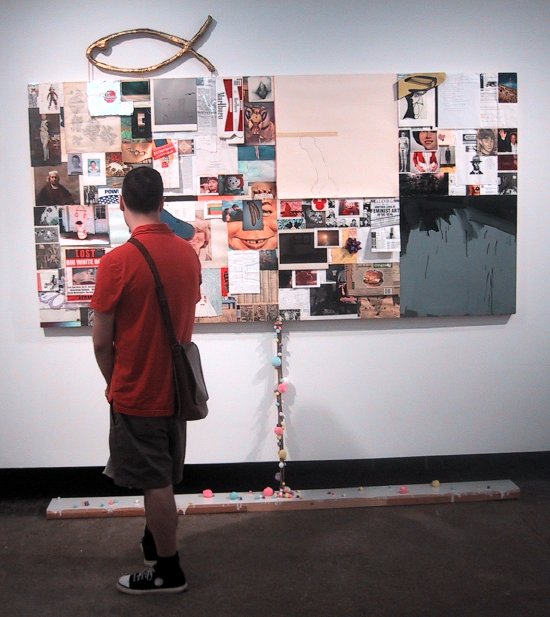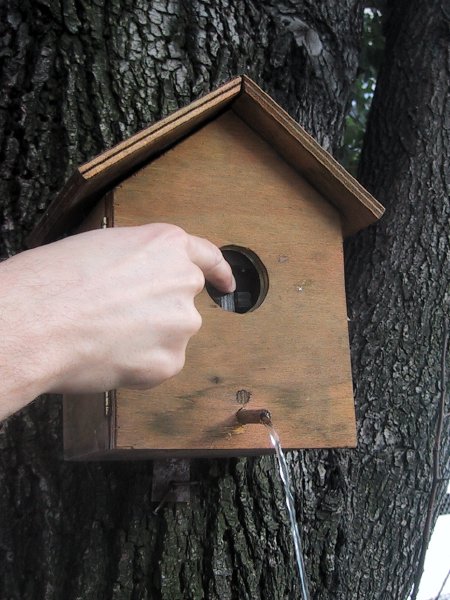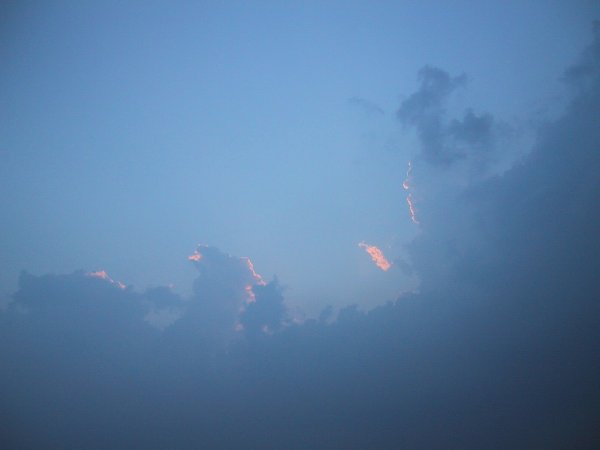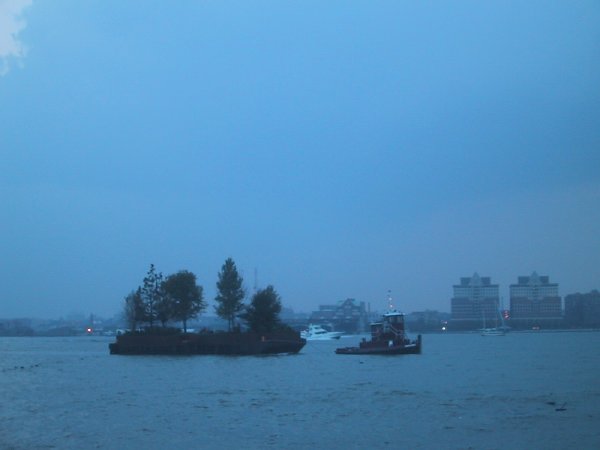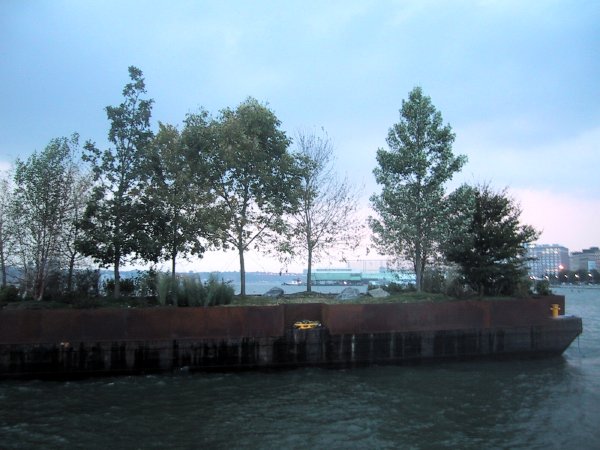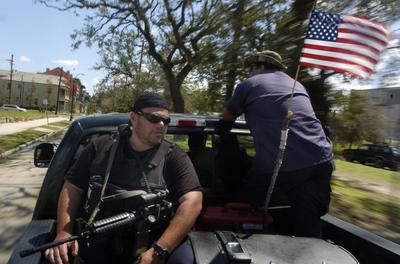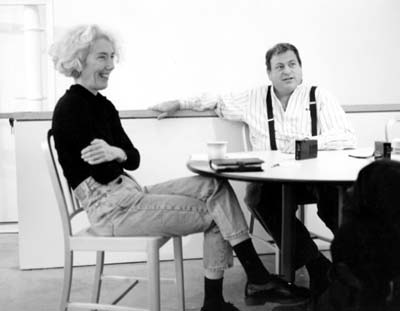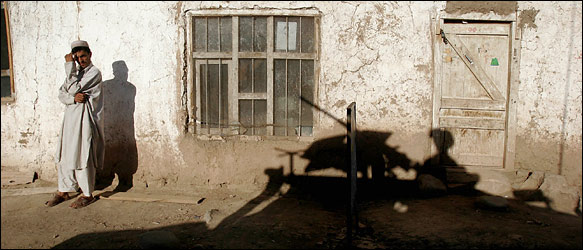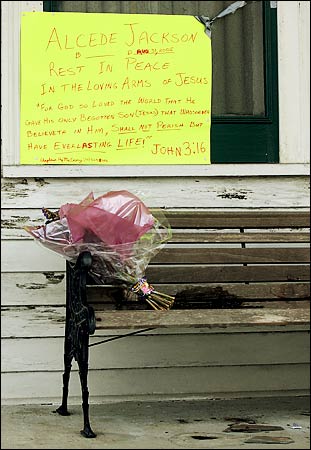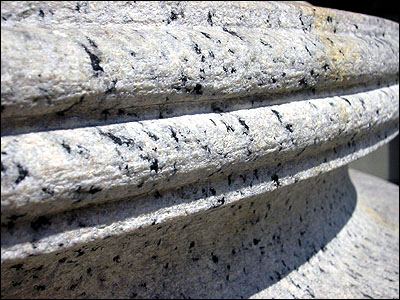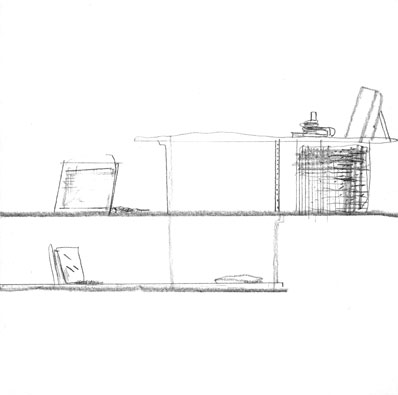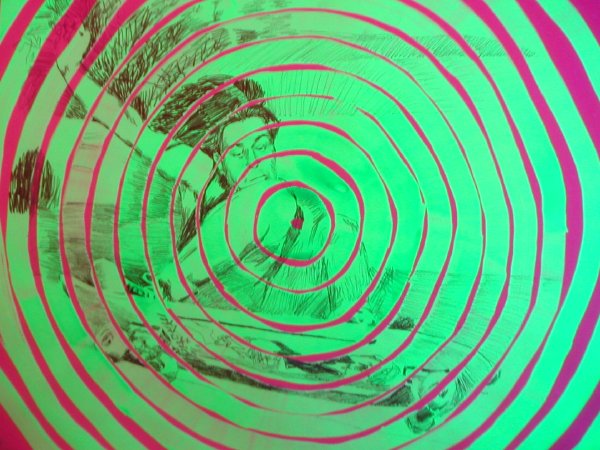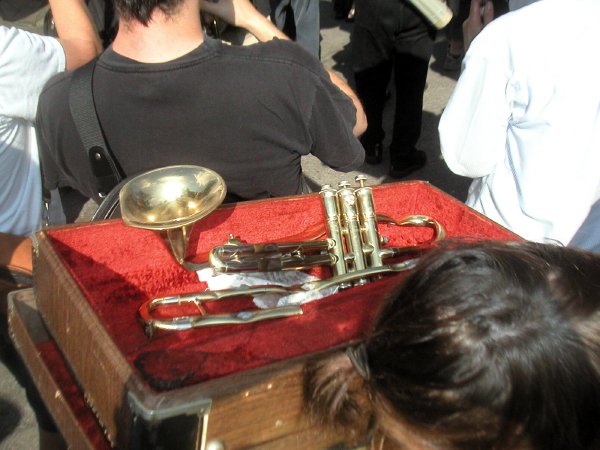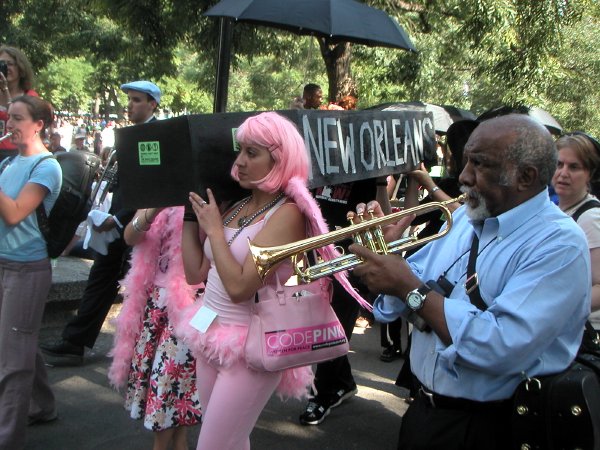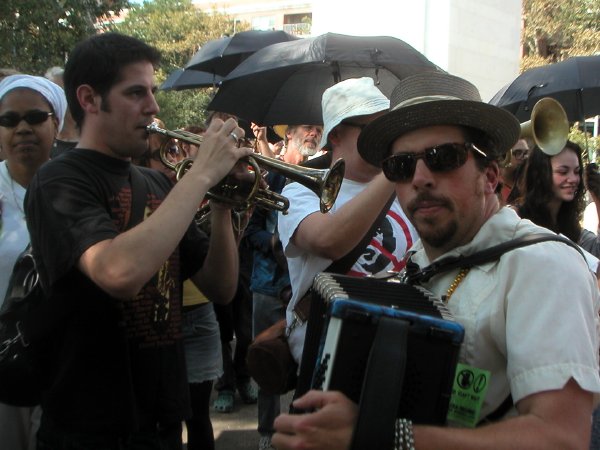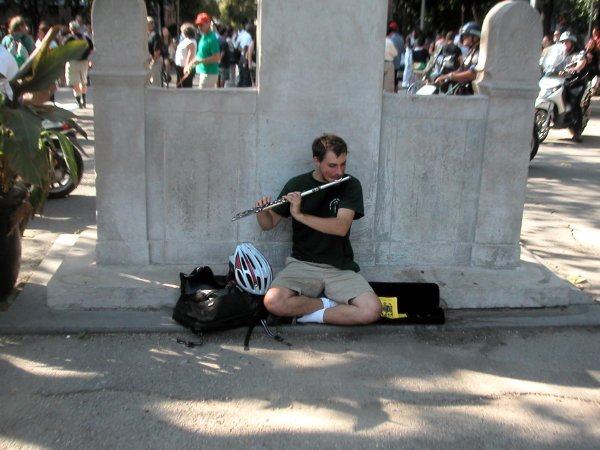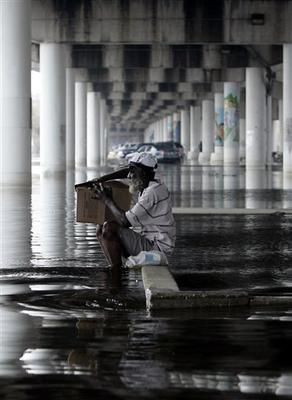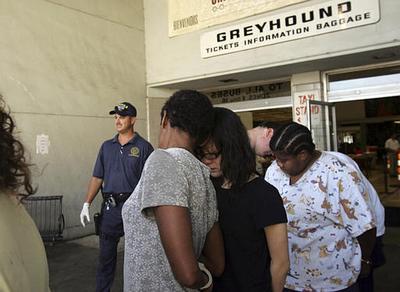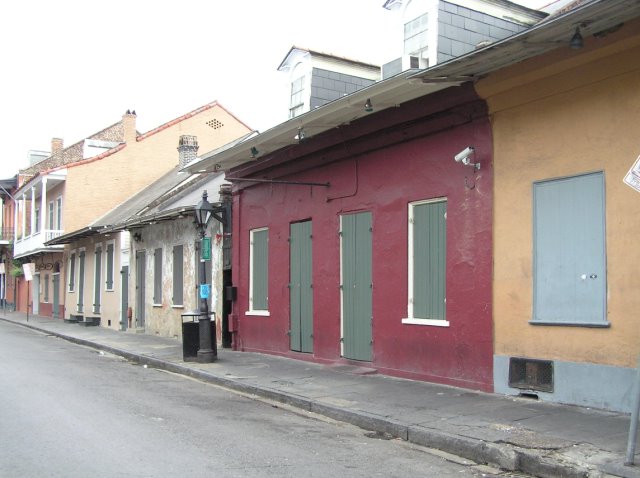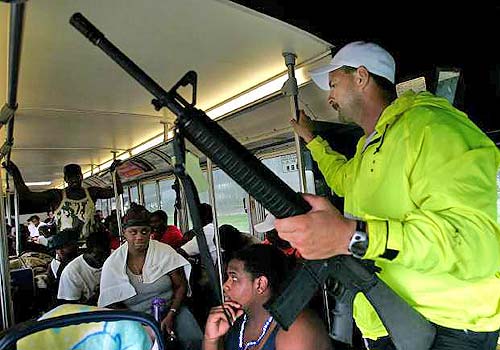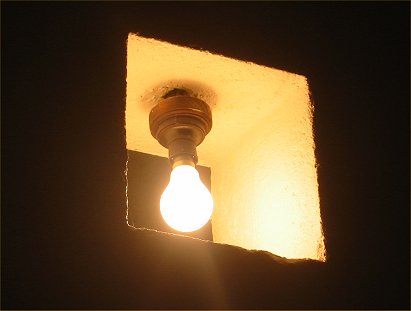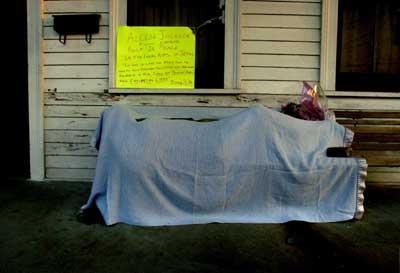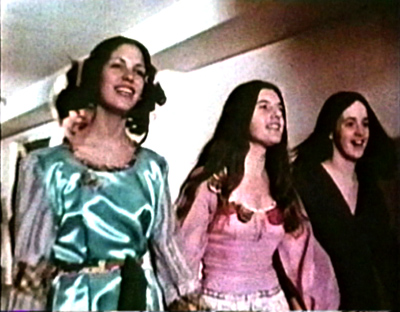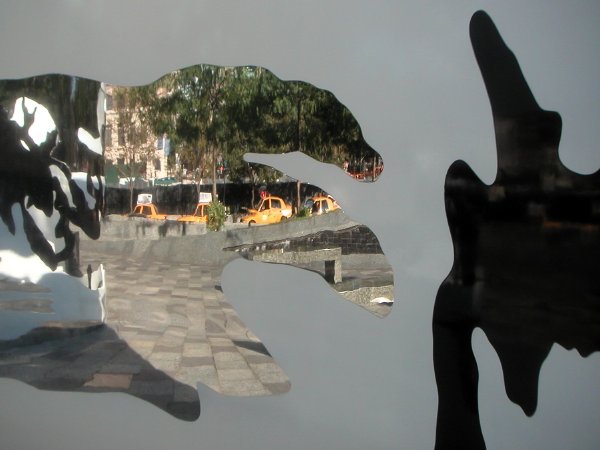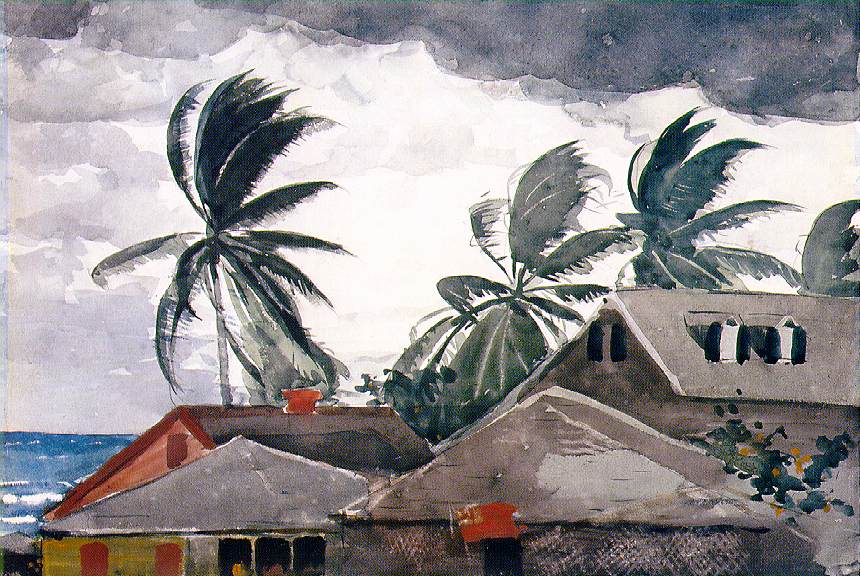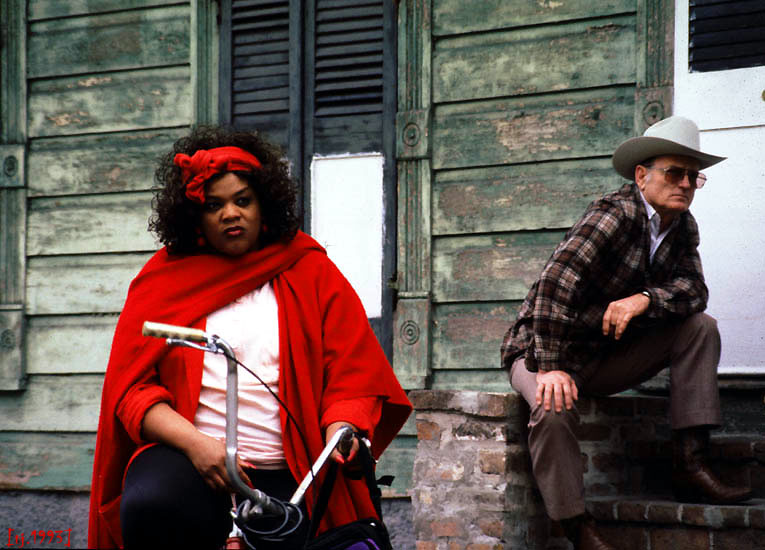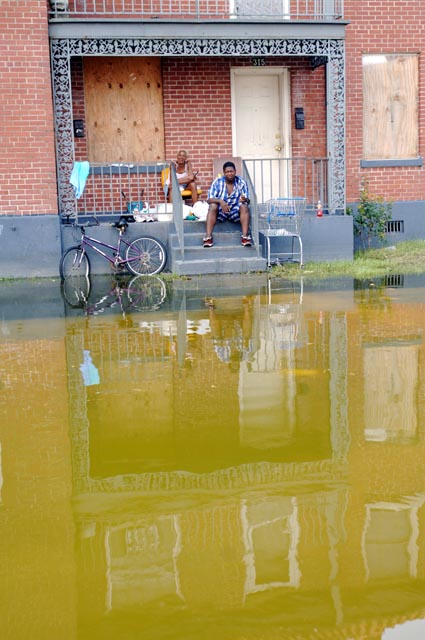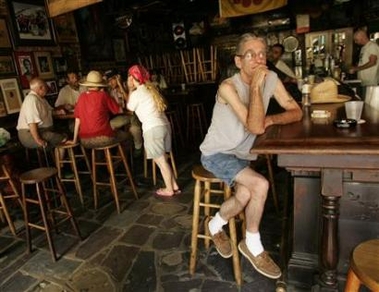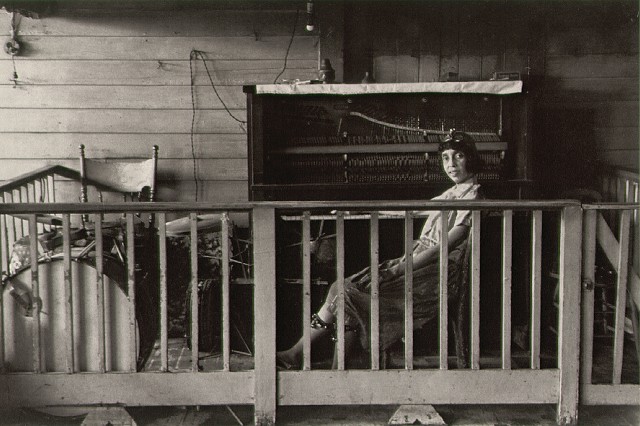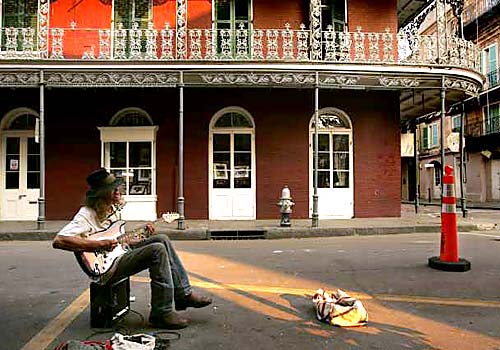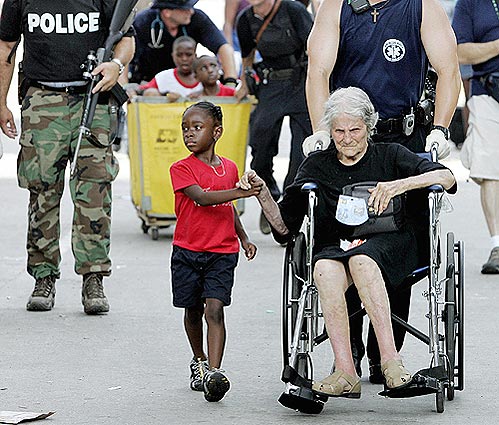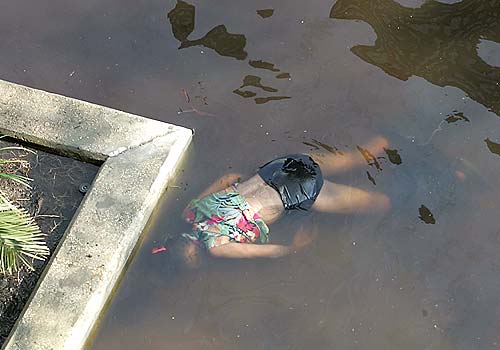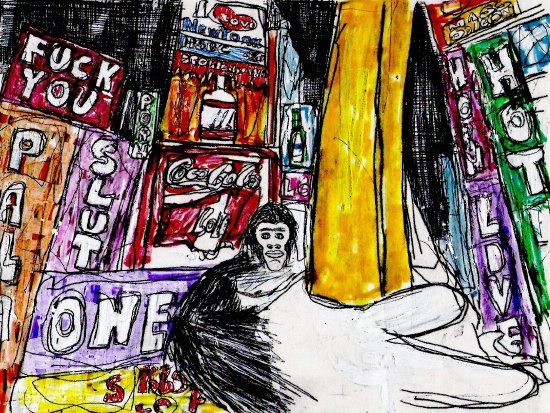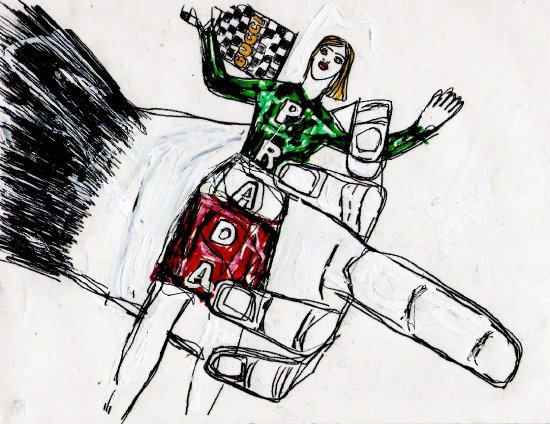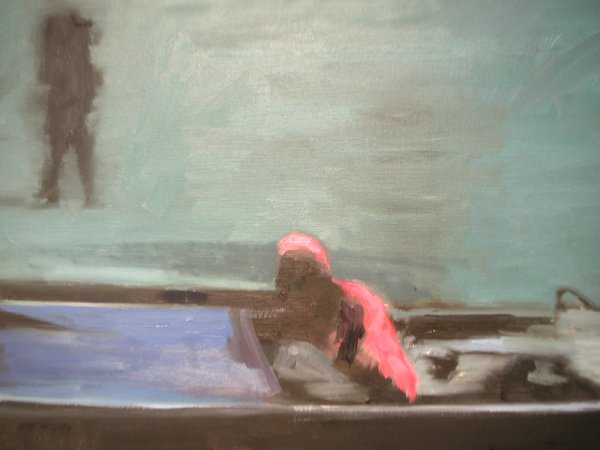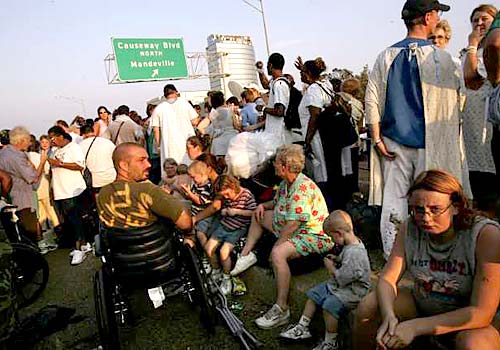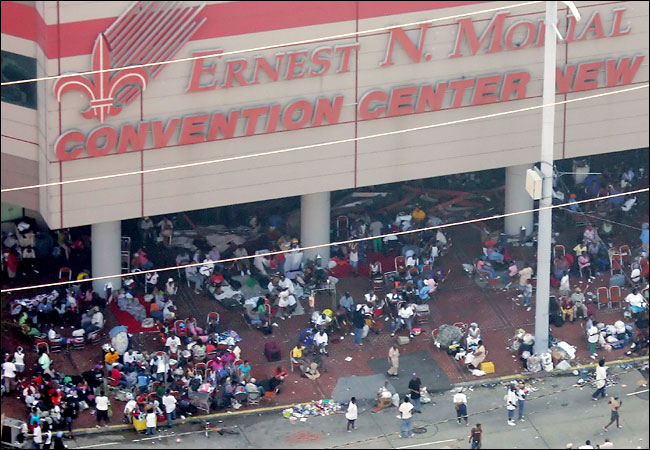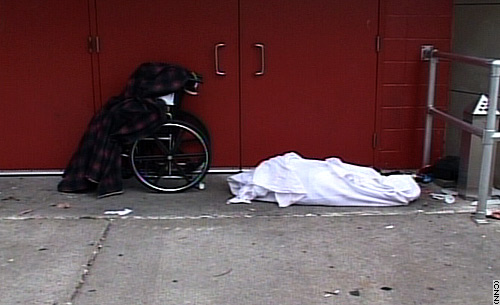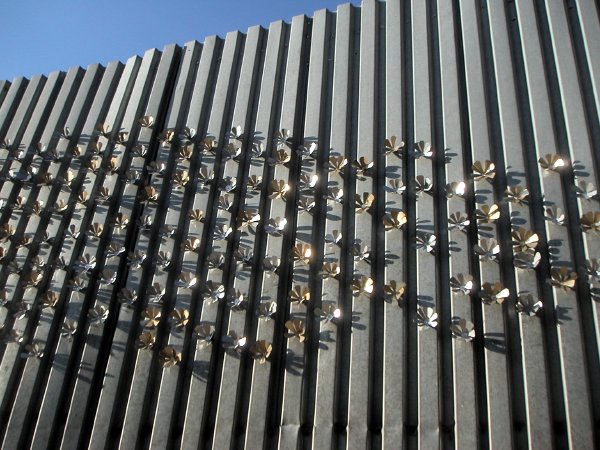Nothing you will read about the disaster in New Orleans is likely to be more useful in understanding what went on inside than this surprisingly restrained account from two visitors caught in a nightmare which really began only when the police and military showed up.
First By the Floods, Then By Martial Law
TRAPPED IN NEW ORLEANS
By Larry Bradshaw
and Lorrie Beth Slonsky
Two days after Hurricane Katrina struck New Orleans, the Walgreens store at the corner of Royal and Iberville Streets in the city's historic French Quarter remained locked. The dairy display case was clearly visible through the widows. It was now 48 hours without electricity, running water, plumbing, and the milk, yogurt, and cheeses were beginning to spoil in the 90-degree heat.
The owners and managers had locked up the food, water, pampers and prescriptions, and fled the city. Outside Walgreens' windows, residents and tourists grew increasingly thirsty and hungry. The much-promised federal, state and local aid never materialized, and the windows at Walgreens gave way to the looters.
There was an alternative. The cops could have broken one small window and distributed the nuts, fruit juices and bottled water in an organized and systematic manner. But they did not. Instead, they spent hours playing cat and mouse, temporarily chasing away the looters.
We were finally airlifted out of New Orleans two days ago and arrived home on Saturday. We have yet to see any of the TV coverage or look at a newspaper. We are willing to guess that there were no video images or front-page pictures of European or affluent white tourists looting the Walgreens in the French Quarter.
We also suspect the media will have been inundated with "hero" images of the National Guard, the troops and police struggling to help the "victims" of the hurricane. What you will not see, but what we witnessed, were the real heroes and sheroes of the hurricane relief effort: the working class of New Orleans.
The maintenance workers who used a forklift to carry the sick and disabled. The engineers who rigged, nurtured and kept the generators running. The electricians who improvised thick extension cords stretching over blocks to share the little electricity we had in order to free cars stuck on rooftop parking lots. Nurses who took over for mechanical ventilators and spent many hours on end manually forcing air into the lungs of unconscious patients to keep them alive. Doormen who rescued folks stuck in elevators. Refinery workers who broke into boat yards, "stealing" boats to rescue their neighbors clinging to their roofs in flood waters. Mechanics who helped hotwire any car that could be found to ferry people out of the city. And the food service workers who scoured the commercial kitchens, improvising communal meals for hundreds of those stranded.
Most of these workers had lost their homes and had not heard from members of their families. Yet they stayed and provided the only infrastructure for the 20 percent of New Orleans that was not under water.
On Day Two, there were approximately 500 of us left in the hotels in the French Quarter. We were a mix of foreign tourists, conference attendees like ourselves and locals who had checked into hotels for safety and shelter from Katrina.
Some of us had cell phone contact with family and friends outside of New Orleans. We were repeatedly told that all sorts of resources, including the National Guard and scores of buses, were pouring into the city. The buses and the other resources must have been invisible, because none of us had seen them.
We decided we had to save ourselves. So we pooled our money and came up with $25,000 to have ten buses come and take us out of the city. Those who didn't have the requisite $45 each were subsidized by those who did have extra money.
We waited for 48 hours for the buses, spending the last 12 hours standing outside, sharing the limited water, food and clothes we had. We created a priority boarding area for the sick, elderly and newborn babies. We waited late into the night for the "imminent" arrival of the buses. The buses never arrived. We later learned that the minute they arrived at the city limits, they were commandeered by the military.
By Day Four, our hotels had run out of fuel and water. Sanitation was dangerously bad. As the desperation and despair increased, street crime as well as water levels began to rise. The hotels turned us out and locked their doors, telling us that "officials" had told us to report to the convention center to wait for more buses. As we entered the center of the city, we finally encountered the National Guard.
The guard members told us we wouldn't be allowed into the Superdome, as the city's primary shelter had descended into a humanitarian and health hellhole. They further told us that the city's only other shelter--the convention center--was also descending into chaos and squalor, and that the police weren't allowing anyone else in.
Quite naturally, we asked, "If we can't go to the only two shelters in the city, what was our alternative?" The guards told us that this was our problem--and no, they didn't have extra water to give to us. This would be the start of our numerous encounters with callous and hostile "law enforcement."
We walked to the police command center at Harrah's on Canal Street and were told the same thing--that we were on our own, and no, they didn't have water to give us. We now numbered several hundred.
We held a mass meeting to decide a course of action. We agreed to camp outside the police command post. We would be plainly visible to the media and constitute a highly visible embarrassment to city officials. The police told us that we couldn't stay. Regardless, we began to settle in and set up camp.
In short order, the police commander came across the street to address our group. He told us he had a solution: we should walk to the Pontchartrain Expressway and cross the greater New Orleans Bridge to the south side of the Mississippi, where the police had buses lined up to take us out of the city.
The crowd cheered and began to move. We called everyone back and explained to the commander that there had been lots of misinformation, so was he sure that there were buses waiting for us. The commander turned to the crowd and stated emphatically, "I swear to you that the buses are there."
We organized ourselves, and the 200 of us set off for the bridge with great excitement and hope. As we marched past the convention center, many locals saw our determined and optimistic group, and asked where we were headed. We told them about the great news.
Families immediately grabbed their few belongings, and quickly, our numbers doubled and then doubled again. Babies in strollers now joined us, as did people using crutches, elderly clasping walkers and other people in wheelchairs. We marched the two to three miles to the freeway and up the steep incline to the bridge. It now began to pour down rain, but it didn't dampen our enthusiasm.
As we approached the bridge, armed sheriffs formed a line across the foot of the bridge. Before we were close enough to speak, they began firing their weapons over our heads. This sent the crowd fleeing in various directions.
As the crowd scattered and dissipated, a few of us inched forward and managed to engage some of the sheriffs in conversation. We told them of our conversation with the police commander and the commander's assurances. The sheriffs informed us that there were no buses waiting. The commander had lied to us to get us to move.
We questioned why we couldn't cross the bridge anyway, especially as there was little traffic on the six-lane highway. They responded that the West Bank was not going to become New Orleans, and there would be no Superdomes in their city. These were code words for: if you are poor and Black, you are not crossing the Mississippi River, and you are not getting out of New Orleans.
Our small group retreated back down Highway 90 to seek shelter from the rain under an overpass. We debated our options and, in the end, decided to build an encampment in the middle of the Ponchartrain Expressway--on the center divide, between the O'Keefe and Tchoupitoulas exits. We reasoned that we would be visible to everyone, we would have some security being on an elevated freeway, and we could wait and watch for the arrival of the yet-to-be-seen buses.
All day long, we saw other families, individuals and groups make the same trip up the incline in an attempt to cross the bridge, only to be turned away--some chased away with gunfire, others simply told no, others verbally berated and humiliated. Thousands of New Orleaners were prevented and prohibited from self-evacuating the city on foot.
Meanwhile, the only two city shelters sank further into squalor and disrepair. The only way across the bridge was by vehicle. We saw workers stealing trucks, buses, moving vans, semi-trucks and any car that could be hotwired. All were packed with people trying to escape the misery that New Orleans had become.
Our little encampment began to blossom. Someone stole a water delivery truck and brought it up to us. Let's hear it for looting! A mile or so down the freeway, an Army truck lost a couple of pallets of C-rations on a tight turn. We ferried the food back to our camp in shopping carts.
Now - secure with these two necessities, food and water - cooperation, community and creativity flowered. We organized a clean-up and hung garbage bags from the rebar poles. We made beds from wood pallets and cardboard. We designated a storm drain as the bathroom, and the kids built an elaborate enclosure for privacy out of plastic, broken umbrellas and other scraps. We even organized a food-recycling system where individuals could swap out parts of C-rations (applesauce for babies and candies for kids!).
This was something we saw repeatedly in the aftermath of Katrina. When individuals had to fight to find food or water, it meant looking out for yourself. You had to do whatever it took to find water for your kids or food for your parents. But when these basic needs were met, people began to look out for each other, working together and constructing a community.
If the relief organizations had saturated the city with food and water in the first two or three days, the desperation, frustration and ugliness would not have set in.
Flush with the necessities, we offered food and water to passing families and individuals. Many decided to stay and join us. Our encampment grew to 80 or 90 people.
From a woman with a battery-powered radio, we learned that the media was talking about us. Up in full view on the freeway, every relief and news organizations saw us on their way into the city. Officials were being asked what they were going to do about all those families living up on the freeway. The officials responded that they were going to take care of us. Some of us got a sinking feeling. "Taking care of us" had an ominous tone to it.
Unfortunately, our sinking feeling (along with the sinking city) was accurate. Just as dusk set in, a sheriff showed up, jumped out of his patrol vehicle, aimed his gun at our faces and screamed, "Get off the fucking freeway." A helicopter arrived and used the wind from its blades to blow away our flimsy structures. As we retreated, the sheriff loaded up his truck with our food and water.
Once again, at gunpoint, we were forced off the freeway. All the law enforcement agencies appeared threatened when we congregated into groups of 20 or more. In every congregation of "victims," they saw "mob" or "riot." We felt safety in numbers. Our "we must stay together" attitude was impossible because the agencies would force us into small atomized groups.
In the pandemonium of having our camp raided and destroyed, we scattered once again. Reduced to a small group of eight people, in the dark, we sought refuge in an abandoned school bus, under the freeway on Cilo Street. We were hiding from possible criminal elements, but equally and definitely, we were hiding from the police and sheriffs with their martial law, curfew and shoot-to-kill policies.
The next day, our group of eight walked most of the day, made contact with the New Orleans Fire Department and were eventually airlifted out by an urban search-and-rescue team.
We were dropped off near the airport and managed to catch a ride with the National Guard. The two young guardsmen apologized for the limited response of the Louisiana guards. They explained that a large section of their unit was in Iraq and that meant they were shorthanded and were unable to complete all the tasks they were assigned.
We arrived at the airport on the day a massive airlift had begun. The airport had become another Superdome. We eight were caught in a press of humanity as flights were delayed for several hours while George Bush landed briefly at the airport for a photo op. After being evacuated on a Coast Guard cargo plane, we arrived in San Antonio, Texas.
There, the humiliation and dehumanization of the official relief effort continued. We were placed on buses and driven to a large field where we were forced to sit for hours and hours. Some of the buses didn't have air conditioners. In the dark, hundreds of us were forced to share two filthy overflowing porta-potties. Those who managed to make it out with any possessions (often a few belongings in tattered plastic bags) were subjected to two different dog-sniffing searches.
Most of us had not eaten all day because our C-rations had been confiscated at the airport--because the rations set off the metal detectors. Yet no food had been provided to the men, women, children, elderly and disabled, as we sat for hours waiting to be "medically screened" to make sure we weren't carrying any communicable diseases.
This official treatment was in sharp contrast to the warm, heartfelt reception given to us by ordinary Texans. We saw one airline worker give her shoes to someone who was barefoot. Strangers on the street offered us money and toiletries with words of welcome.
Throughout, the official relief effort was callous, inept and racist. There was more suffering than need be. Lives were lost that did not need to be lost.
Larry Bradshaw and Lorrie Beth Slonsky are emergency medical services (EMS) workers from San Francisco and contributors to Socialist Worker. They were attending an EMS conference in New Orleans when Hurricane Katrina struck. They spent most of the next week trapped by the flooding--and the martial law cordon around the city.
